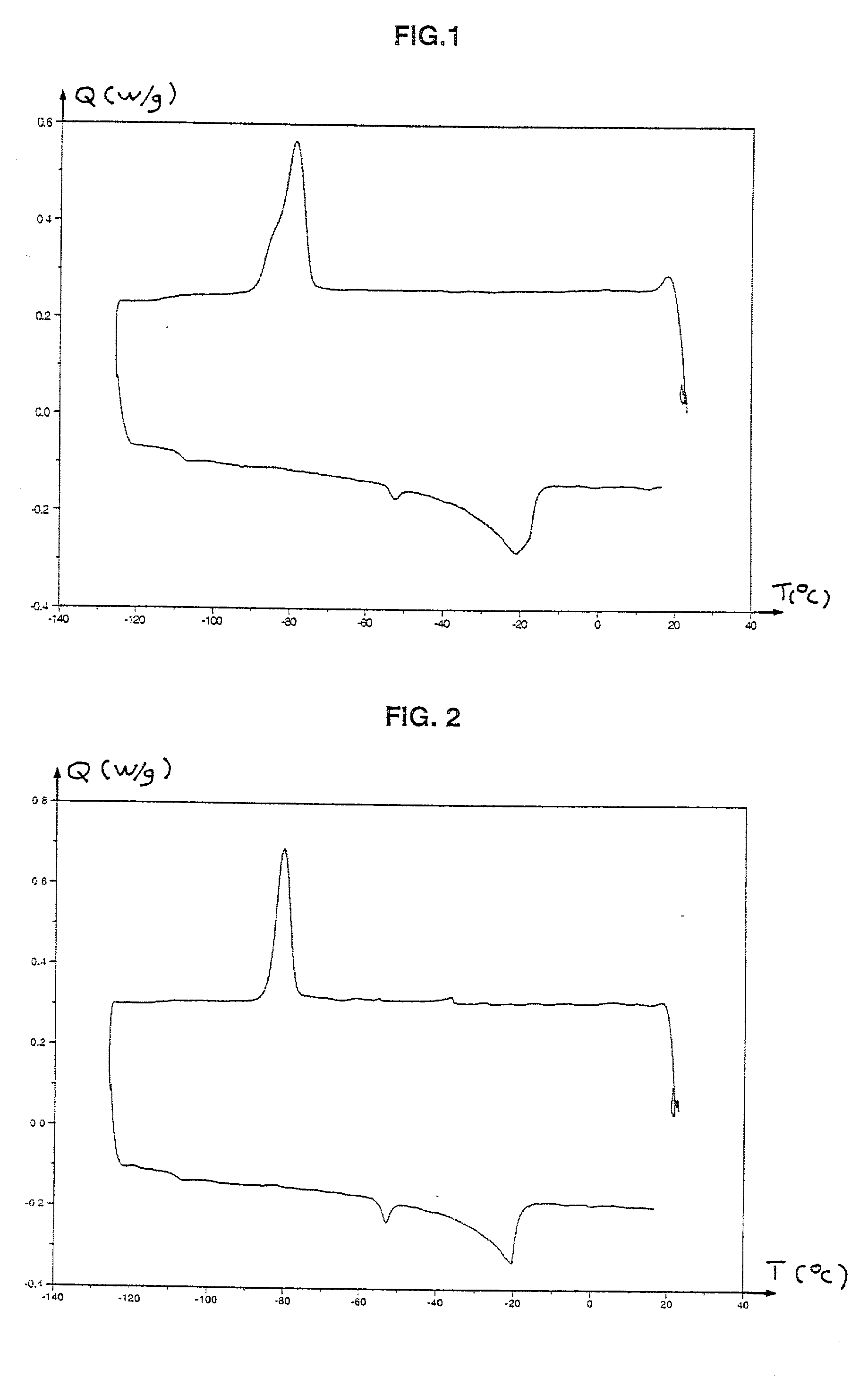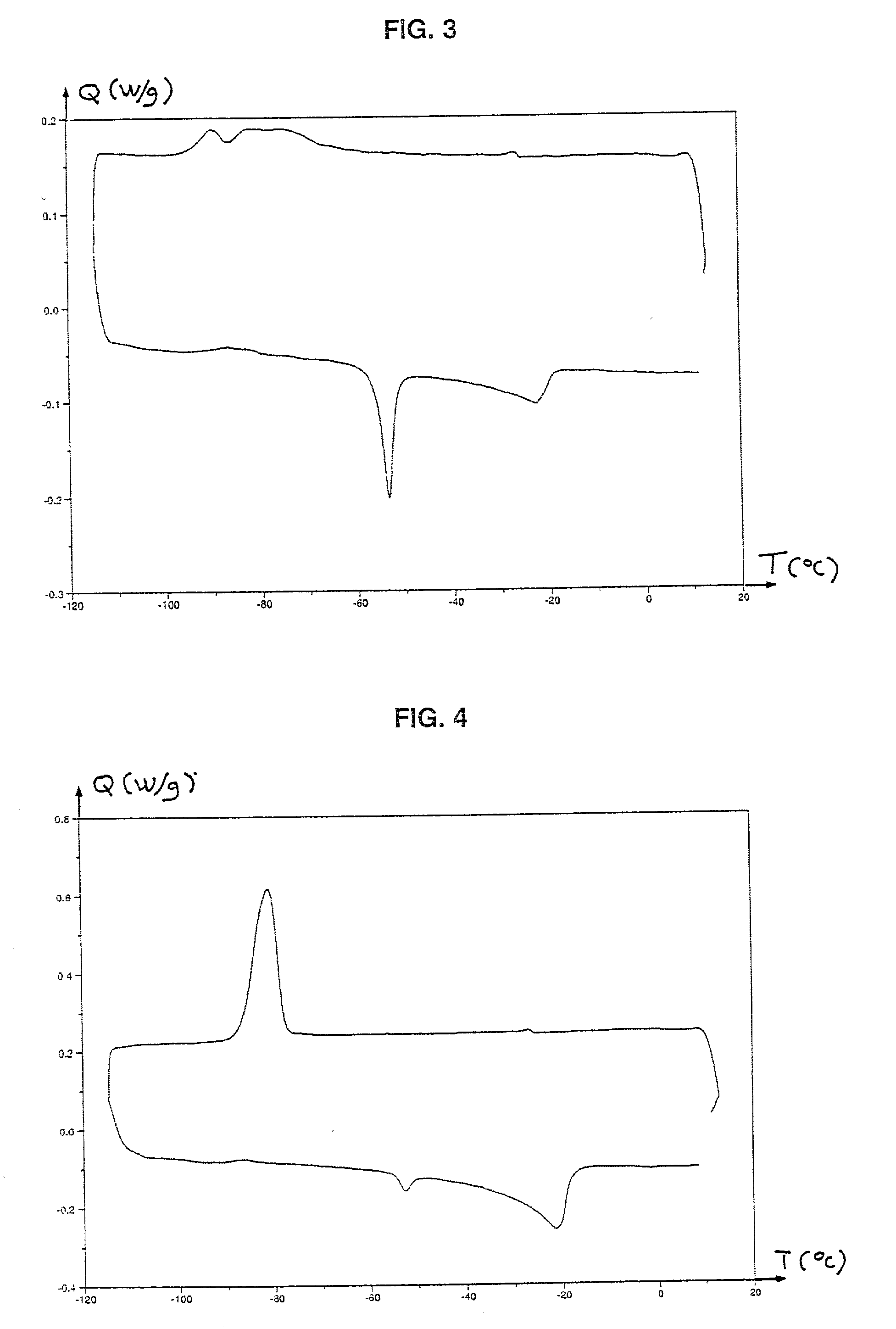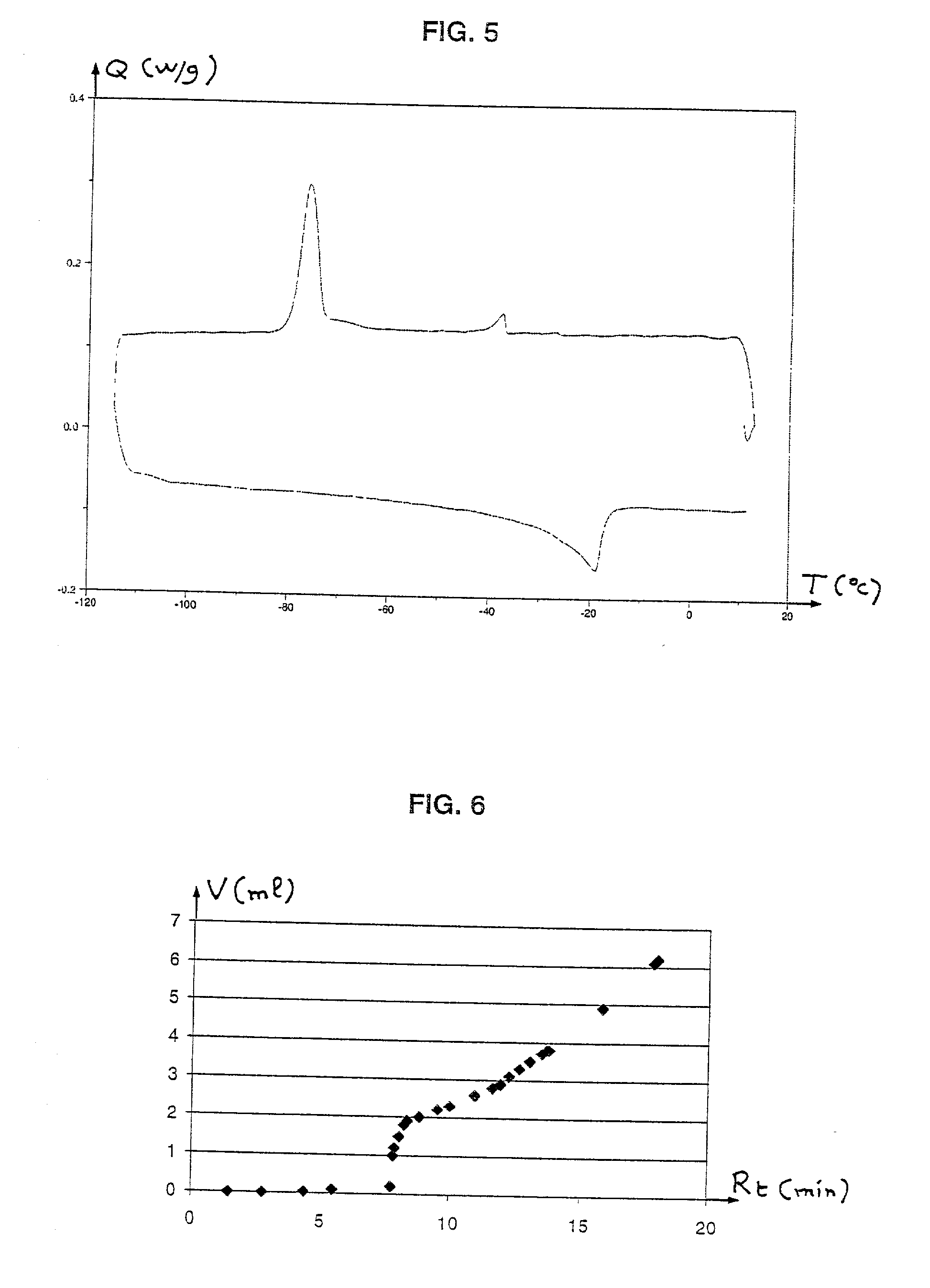Oil-based demulsifying agent and its use in the treatment of drains bored in oil-based mud
a technology of demulsifying agent and oil-based mud, which is applied in the direction of liquid displacement, separation process, and well accessories, etc., can solve the problems of generating considerable additional damage, destroying the design of drilling fluid intended to reduce damage, and using unsuitable cleaning procedures and/or products
- Summary
- Abstract
- Description
- Claims
- Application Information
AI Technical Summary
Problems solved by technology
Method used
Image
Examples
example 1
[0058] Cake Destructuring Test in a Crystallizer
[0059] The kinetic aspects of the cake's destructuring and the influence of temperature were studied in three commercial oil-based mud formulations.
[0060] Principle: The oil-based mud is filtered on filter paper in a static filtering cell using the API procedure at a temperature of 80.degree. C. and under a pressure difference of 35 bars for one hour. Segments of the cake obtained are placed in crystallizers in contact with 20 ml of treatment solution at 1 g / 100 ml in the oil of the mud for varying times at ambient temperature and at 80.degree. C. The breaking of the emulsion within the cake is evaluated using the DSC technique.
[0061] Pieces of the filter paper supporting the cake are cut away with a scalpel. The weight of the samples is approximately 10 mg, weighed accurately. Using tongs, the sample is placed in an aluminum capsule. Particular care is taken in handling the sample (cutting away with the filter paper, placing in the ca...
example 2
[0069] Static Filtration
[0070] Mud formulation A (BAROID) is filtered using the API procedure (API standard 13) at a temperature of 80.degree. C. and under a pressure difference of 35 bars. After 300 ml of mud is filtered for one hour, the cell is depressurized, emptied of mud, rinsed with 200 ml of treatment solution, then filled with 300 ml of treatment solution at 1 g / 100 ml of demulsifying formulation 1. The cake inside the cell is left in contact with the treatment solution for 30 minutes at atmospheric pressure and at 80.degree. C. (soaking time), then additional pressure of 10 bars is applied in order to allow another filtration. A two-phase filtrate is observed after filtering for 10 minutes. The breaking of the emulsion is also correlated to the break in the line of the filtration graph, which also appears in the region of 10 minutes (cf. FIG. 6: HP-HT static filtration of mud A followed by demulsifying filtration 1 at 1 g / 100 ml after a contact time of 30 minutes. In FIG. ...
example 3
[0073] Compatibility
[0074] In order to avoid additional damage to the formation of the wall, it is advisable to check whether emulsions have formed in situ by choosing a treatment fluid that is compatible with the reservoir fluids (brine and oil) and the mud filtrate.
[0075] In this example, the brine (NaCl, 40 g / l) is placed in contact with an organic phase comprising the reservoir oil, the mud filtrate and the demulsifier.
[0076] The filtrate is reconstituted from the base oil and the mud surfactants. In the organic phase, the proportions of filtrate and reservoir oil vary: 0-100, 25-75, 50-50, 75-25, 100-0 (proportions by volume). Demulsifying formulation 1 is added at a rate of 1 g per 100 ml.
[0077] The brine is added progressively to the organic phase, the emulsion is agitated for 1 minute at 12,000 rpm with a commercial Hamilton Beach agitator. The proportion of brine in the system varies from 10 to 90% (10, 25, 50, 75 and 90%).
[0078] Phase separation is observed visually on a 2...
PUM
| Property | Measurement | Unit |
|---|---|---|
| pressure | aaaaa | aaaaa |
| temperature | aaaaa | aaaaa |
| weight | aaaaa | aaaaa |
Abstract
Description
Claims
Application Information
 Login to View More
Login to View More - R&D
- Intellectual Property
- Life Sciences
- Materials
- Tech Scout
- Unparalleled Data Quality
- Higher Quality Content
- 60% Fewer Hallucinations
Browse by: Latest US Patents, China's latest patents, Technical Efficacy Thesaurus, Application Domain, Technology Topic, Popular Technical Reports.
© 2025 PatSnap. All rights reserved.Legal|Privacy policy|Modern Slavery Act Transparency Statement|Sitemap|About US| Contact US: help@patsnap.com



